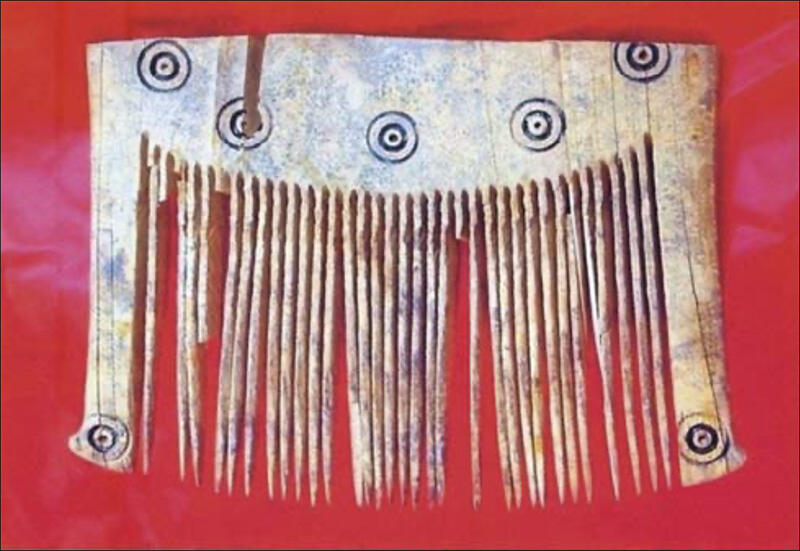This article, in a volume in honor of the "father" of Central Asian Archaeology, Victor Sarianidi, is a solid recap of the many connections between the ancient Indus civilization and contemporaneous Central Asian cultures. The discoveries at Gonur Depe, Ana Depe and Altyn Depe ("Depe" means mound) in Turkemenistan (almost 1,400 kilometers from Mohenjo-daro, straight across Afghanistan) in recent decades have been remarkable for how much they suggest deep and important contacts between Indus and so-called BMAC (Bactria-Margiana Archaeological Complex) culture that flourished during roughly the same period (and which Victor Sarianidi did so much to help discover in the 1970s).
These include a wide variety of ivory objects like dice and hairpins; Bakry adds "ivory objects were not only found at Altyn Depe and Gonur Depe, there were also unique ivory discs unearthed at Djarkutan (Southern Uzbekistan), where we can also find the depictions of the pipal leaves (typical Indus motif)" (p. 424). Then there are the ceramics; about a fifth of Harappan types have counterparts in the later (Namazga V) phase of BMAC culture (about 2300-1800 BCE). These includes the dish-on-stand and perforated jar types. Seals have been found, Bakry notes: "It is important that Altyn Depe seals were uncovered in a ritual center including a tomb for priests, where various valuable artifacts were found near the altar, including the golden head of a bull and the seal number 2 [a swastika seal]" (p. 427). Indeed, it seems as if it is in burials of the elites and what could be priestly or ritual centers that many of the finds of the most sophisticated goods were made. Beads, bangles, even a faience monkey figurine has been found at Gonur Depe.
Just like with the Indus civilization, much work needs to be done – e.g. more sites need to be excavated and hopefully will be in the coming decades – in Turkmenistan and Central Asia. The evidence so far suggests that many more connections between the two areas during the Bronze Age will be discovered, and we will find, once again, that peoples and cultures thousands of years ago were in far deeper contact than we often think today. In that sense, this comprehensive compilation is just the beginning of what one day might be many volumes of ancient Indus connections to a civilization to the northwest we know so very little about.
Image: Ivory artifacts from the chamber tomb 3245, Royal Necropolis of Gonur Depe (after Sarianidi, 2010).
- Log in to post comments

